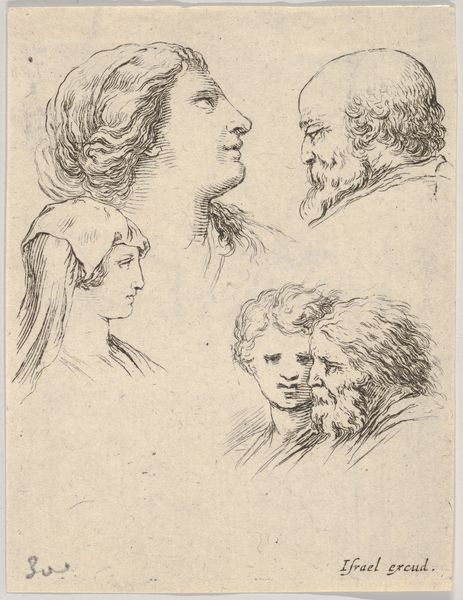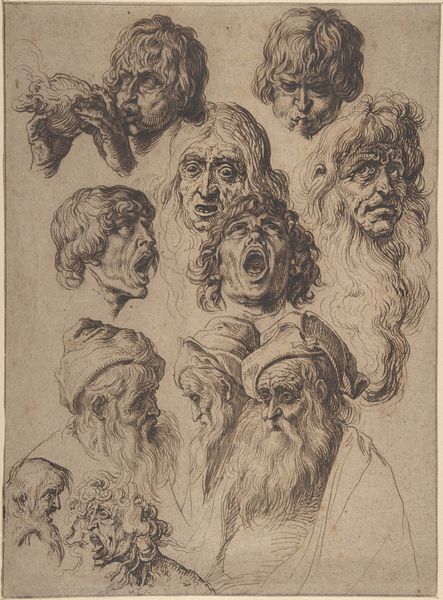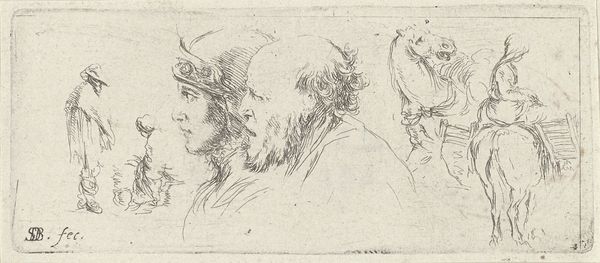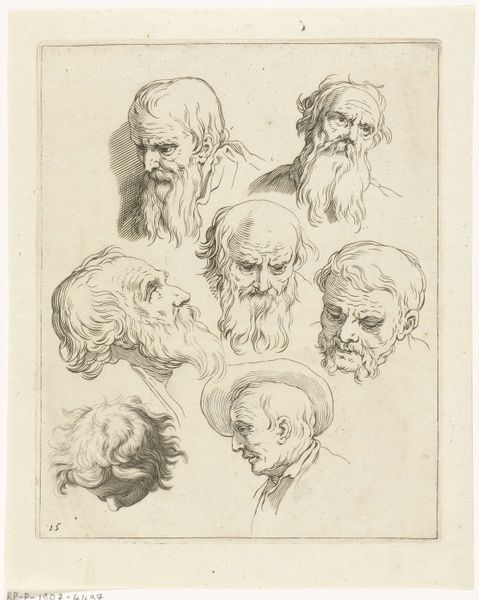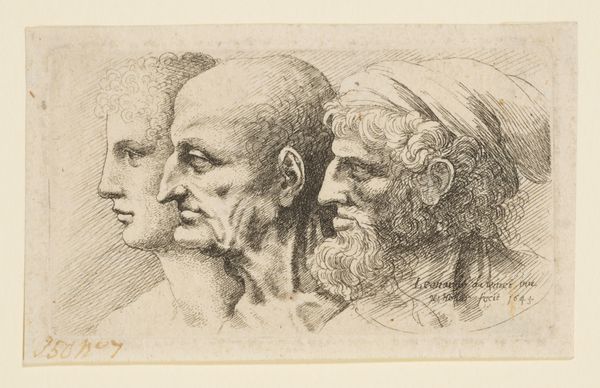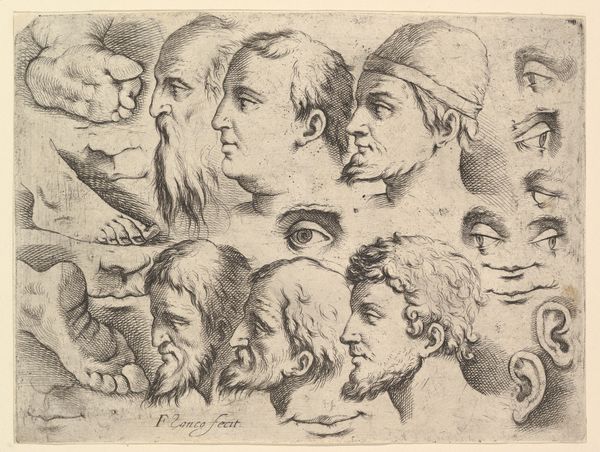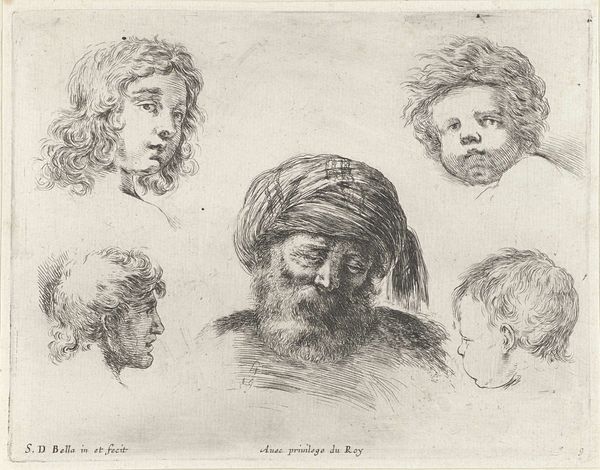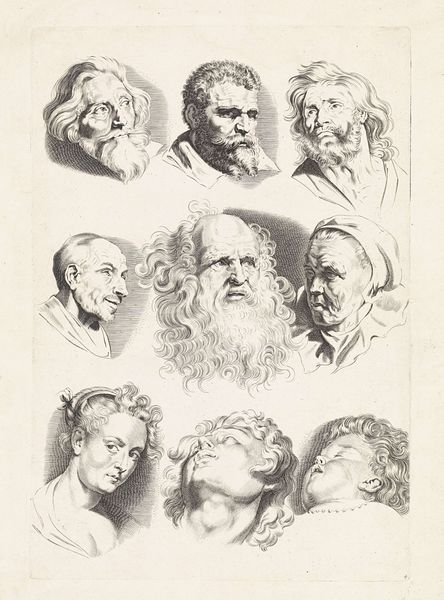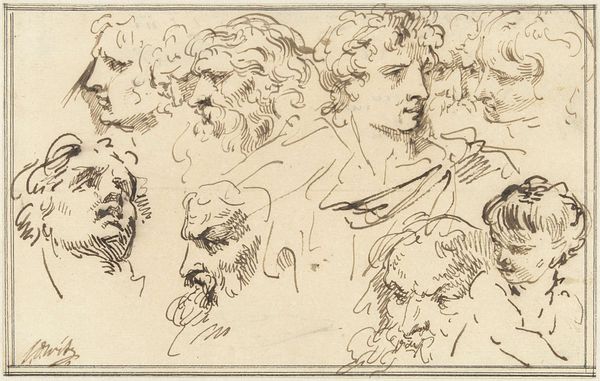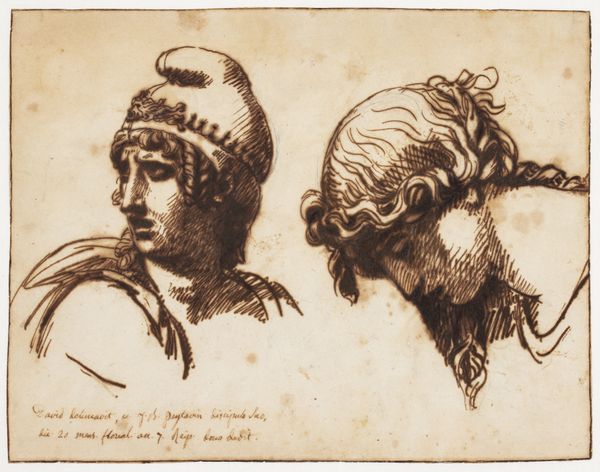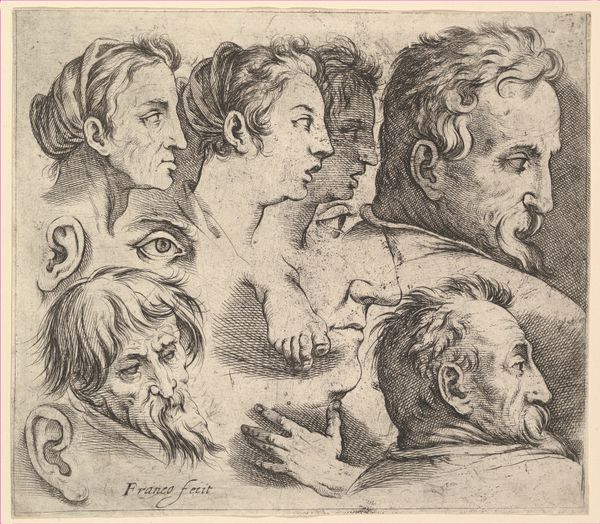
Plate 10: six heads, three bearded men, one soldier, and two children from 'The Book for Learning to Draw' (Livre pour apprendre à dessiner) 1647 - 1652
0:00
0:00
drawing, print, etching
#
portrait
#
drawing
# print
#
etching
#
11_renaissance
#
child
#
soldier
Dimensions: Sheet: 3 1/4 x 2 1/2 in. (8.3 x 6.4 cm)
Copyright: Public Domain
Curator: Here we have "Plate 10: six heads, three bearded men, one soldier, and two children from 'The Book for Learning to Draw'" by Stefano della Bella, created sometime between 1647 and 1652. It’s an etching and print. Editor: It feels like a glimpse into another era, a collection of intriguing character studies. The contrast in ages, from the wizened men to the cherubic children, really catches my eye. Curator: Della Bella was incredibly prolific, and known for these types of studies. The intent behind this plate, intended for a drawing instruction manual, places it within a fascinating history of artistic education. We must think about accessibility and class. Who was this 'book' made for? And what does it say about artistic training at the time? Editor: Absolutely. I wonder about the selection of these specific faces, particularly the soldier. What broader narratives were being taught alongside the techniques of drawing? What is communicated by having these heads all clustered together on one plate? Curator: Consider the social climate. Della Bella lived during a time of immense political and social upheaval in Europe. A soldier's head implies a certain societal endorsement of violence. But on the other hand, the artist gave the plate the feeling of life studies, models posing perhaps. Editor: It highlights art’s intrinsic connection to power. But the children also represent the future, don't they? A potential for change and perhaps peace in a world seemingly consumed by conflict, perhaps to give the composition some levity, which it sorely needs otherwise. Curator: It is important not to let our present conceptions of innocence and youth define our understanding. As modern viewers, we bring our assumptions, perhaps coloring how we see these children outside of a Renaissance and Baroque-era conception of youth. Editor: I suppose what strikes me most is that, even in what seems like a simple instructional piece, we uncover layers of societal values and implicit messaging. Curator: Exactly. Della Bella's etching isn't just a tool for learning to draw; it’s a window into the values and power structures of 17th-century society. Editor: It just goes to show how even the most seemingly straightforward artworks can offer so much depth upon closer examination, offering clues that resonate even centuries later.
Comments
No comments
Be the first to comment and join the conversation on the ultimate creative platform.
